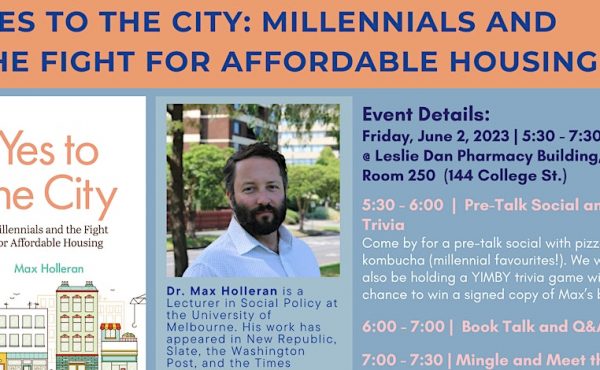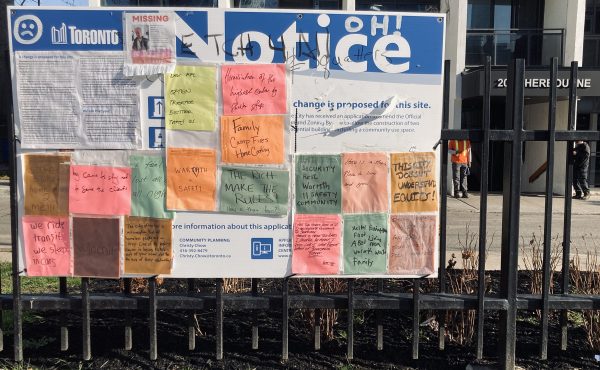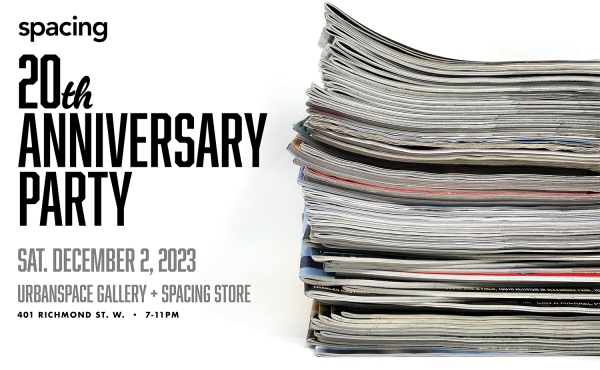
Once again Spacing is pleased to be a part of Toronto Public Library’s Keep Toronto Reading program. This April the library hopes the whole city will join in reading Austin Clarke’s 2009 Toronto Book Award winner, More, a novel that has inner-city Toronto as its very backbone. Throughout the month, Spacing Toronto will present a series of posts exploring the book and its relationship to our city.

In the 1820s, Scotsman William Allan built a family estate on what is now the west side of Sherbourne, north of Queen. Allan’s only surviving son, and Toronto’s eleventh mayor, later lived on land directly north of this, today the eponyms botanical gardens. The original family house, called Moss Park, was demolished long ago, and today Moss Park refers both to the Moss Park Apartments, run by the Central Sherbourne section of Toronto Community Housing Corporation, and to the surrounding area, whose boundaries go all the way up to Carlton and down to King in the 2006 Toronto census. It is an area with a Toronto Life Real Estate profile beginning “has potential, but it’s hampered by crime” (their ultimate verdict being that the neighbourhood’s reputation for drugs and delinquency “produce deals you’re not likely to find elsewhere”). A 2008 Toronto Star article characterizes Moss Park police as “in a constant battle to curb…drugs, prostitution, theft, fighting.”
The Moss Park Apartments and surrounding streets figure heavily in More. Idora Morrison, the novel’s protagonist, has lived in a basement apartment facing the park on Shuter for many years. Her sitting room, which doubles as her bedroom, has two small south-facing windows through which she can see the park, where her troubled son BJ spends much of his time.
This weekend I took a bike ride through Moss Park to see if I could find Idora’s house. It is, I am almost certain, one of the houses behind the basketball courts on the left:

The Park itself was mostly empty. The only resident I met while wandering through the apartment complex was a friendly middle aged man who looked like he was on his way to the shops. The view of the downtown, looking west from the corner of Seaton and Queen, was beautiful:

I grew up in a very different Toronto from the one Idora knows in More. It is pleasing, of course, to read about her having drinks at the El Mocambo, about her shopping for West Indian spices in Kensington Market, and to hear her complain about the vast emptiness of Dundas Square. But each time Idora returns to the loneliness of her apartment, she is in a Toronto that is probably a lot less familiar to most of us, where police cruisers are as “numerous as black squirrels” (1) and guns are fired “more often than fireworks displays organized by City Hall” (105).
The next few weeks will be a welcome chance to consider in detail Toronto as explored in More. The book is both a damning critique (of poverty and racism in a city perhaps too vocal about its blessed multiculturalism) and a celebration (of Idora’s spirit, and of the rich cultural heritage she brought with her to Canada). Throughout the month, TPL aims to pull on both of these threads through book circles, panel discussions and (hurrah!) cooking classes across the city. A complete One Book Events listing can be found here.
A map of Idora’s movement through Toronto can be found here.
More on historical Moss Park can be found here.




One comment
Thanks for including the map — very helpful for someone who lives outside of Toronto.